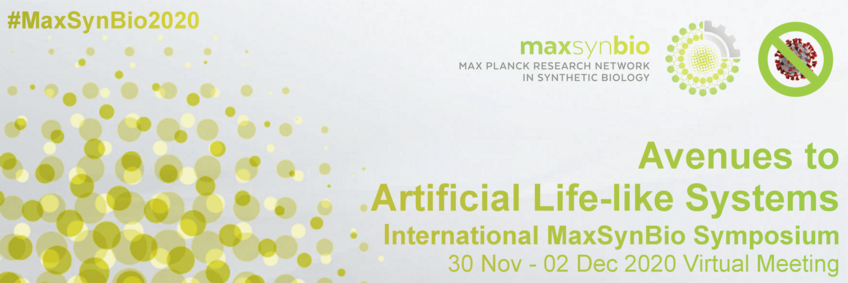
#31 - Four-Dimensional Deoxyribonucleic Acid-Gold Nanoparticle Assemblies
Philippe Jung (DWI-Leibniz Institute for Interactive Materials, Aachen; Max Planck School Matter to Life)
Tuesday, 01 Dec 21:15 - 22:00 CET
Access to the BigBlueButton rooom for this Mini Talk via the lists for Monday and Tuesday.
Please make yourself familiar with BigBlueButton before you join the Mini Talk - read the instructions.
Abstract
Title: Four-Dimensional Deoxyribonucleic Acid-Gold Nanoparticle Assemblies
Author(s): Ming Luoa,b,c, Mingjun Xuanc,d, Shuaidong Huoc, Jilin Fanc,d, Gurudas Chakrabortyc,d, Yixi Wanga,b, Hui Zhaoa,b,e, Andreas Herrmannc,d, Lifei Zhengc,d
Affiliation(s): aInstitute of Fundamental and Frontier Sciences, Chengdu,China; bUniversity of Electronic Science and Technology of China, Chengdu, China; cDWI-Leibniz Institute for Interactive Materials, Aachen, Germany; dInstitute of Technical and Macromolecular Chemistry RWTH Aachen University, Aachen, Germany; eSchool of Chemical Engineering, Sichuan, China
Abstract: In nature molecular self-assembly is essential for biological function. Unlike most man-made materials, life, and the complex structures it constitutes of are thermodynamically unstable and therefore exist out-of-equilibrium. Living systems temporally and spatially self-regulate the formation of functional structures by internally orchestrating assembly and disassembly kinetics of dissipative biomacromolecular networks. Prominent examples for this are the GTP-driven assembly of tubulin into microtubules [1], the ATP-fueled crosslinking of actin filaments [2] and the mitotic spindle formation [3]. To sustain their structure and function these systems continuously consume energy and materials via irreversible processes. The pioneering work of Mirkin and Alivisator to exploit the specific base pairing of oligonucleotides for the organization of gold nanoobjects has attracted a great amount of interest in the field of nanoscience and has prompted a vast number of deoxyribonucleic acid (DNA)-based three-dimensional colloidal assemblies. The autonomous and temporal control of the self-assembly, however remains challenging. We herein present a novel dissipative assembly system with time being an additional dimension for the fabrication of DNA-fueled four-dimensional gold-nanostructures [4]. The dissipative nature of the system is achieved using exonuclease III digestion of the DNA fuel as an energy-dissipating pathway. We demonstrate the temporal control over amorphous clusters composed of spherical gold nanoparticles (AuNPs) and well-defined core-satellite structures from gold nanorods (AuNRs) and AuNPs. Moreover, taking advantage of the high specificity of DNA hybridization, we demonstrate the selective activation of the evolution of multiple architectures of higher complexity in a single mixture containing small and larger spherical AuNPs and AuNRs.